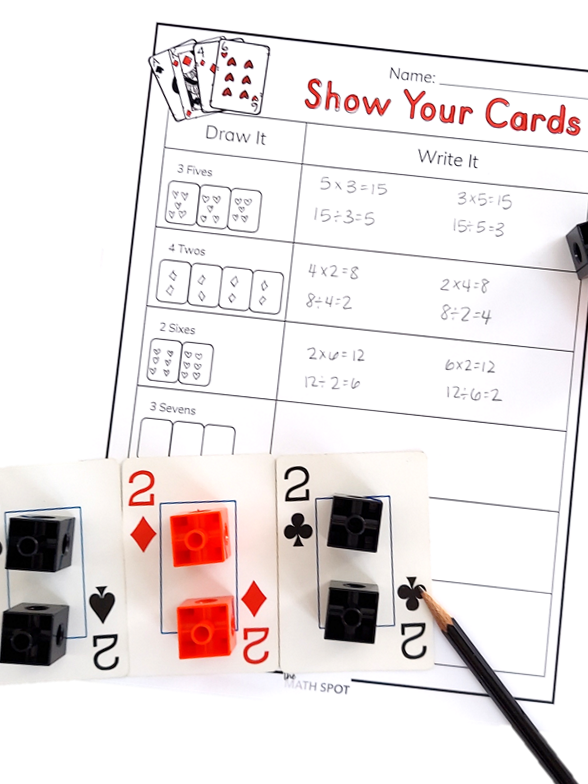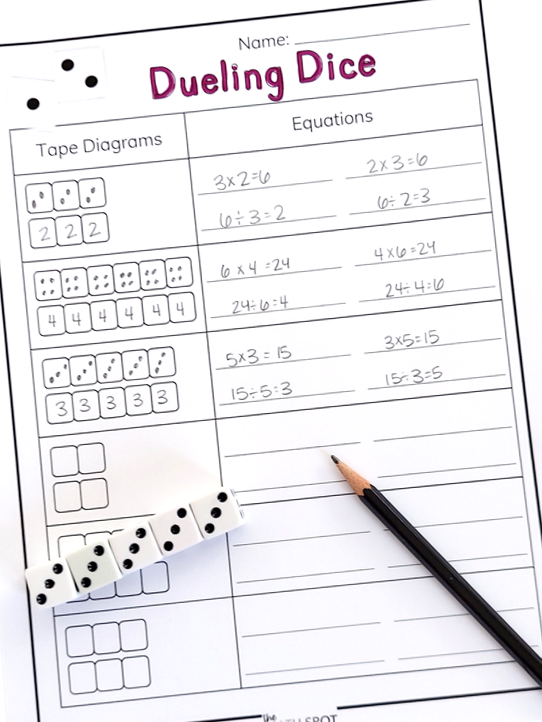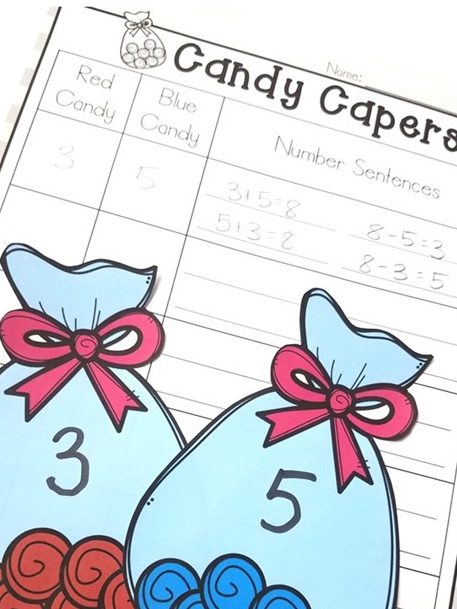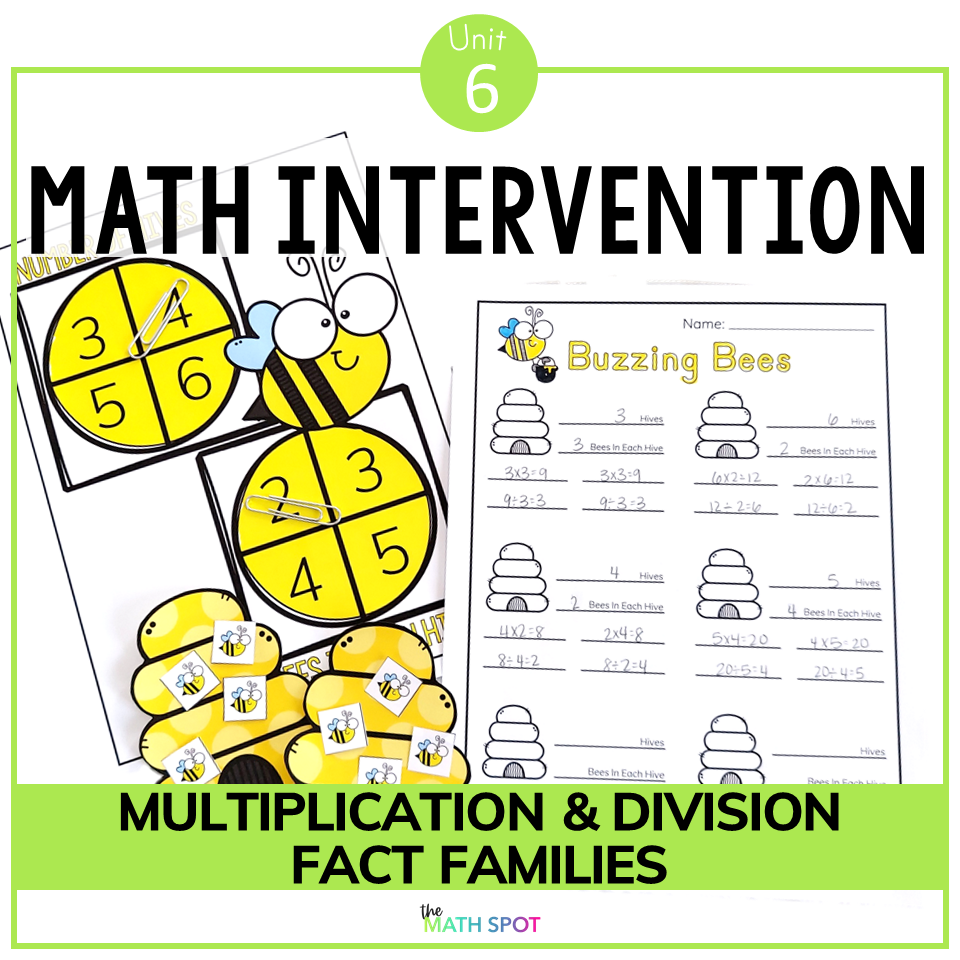This post contains affiliate links. This means that when you make a purchase, at no additional cost to you, I will earn a small commission.
Your students may be working on fact family activities to better understand the relationship between addition and subtraction or multiplication and division, but did you know that flexibility with these fact family activities also boosts your students’ fact fluency? It’s true!
Taking a CRA approach to fact families can help your students to generate the related facts in addition and subtraction or multiplication and division fact families.
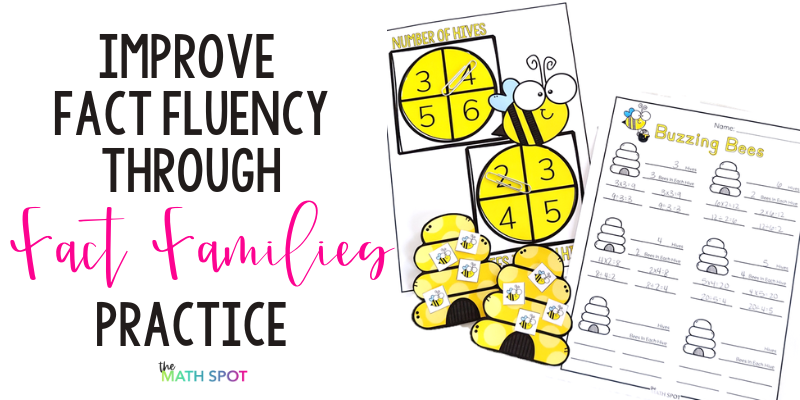
Fact Family Activity #1: Go Concrete!
Allow students to use a concrete manipulative such as linking cubes that they can physically put together and take apart to generate the 4 related facts.
In this example, pictures of turtles and turtle shells have been added to the blocks so that there is context around the number as well.
Ask your students to find all of the ways we can put the turtles and shells together and all of the ways we can take them back apart again.
While students are using the hands-on materials, I also ask them to put their numbers into a number bond. This helps link to representative and abstract levels!
A similar activity can be conducted with multiplication and division! Provide your students with counters (ex: centimeter cubes) and containers (ex: cups). Pretend that the centimeter cubes are ice cubes and you are wondering if your students can find all of the ways that you put together and take apart 30 ice cubes using the numbers 5 and 6.
Fact Family Activity #2: Don’t Stop at One Hands-On Tool!
When you are focused on building a web rather than climbing a ladder, you know that the more hands-on opportunities your students experience, the more deeply they will understand and retain a math concept.
A material such as red and yellow disks is another concrete tool that can be useful for your students. The difference between the linking cubes with pictures and red and yellow disks is that the disks lack a story context making them a bit trickier to work with for students.
Additionally, it is useful to use a variety of concrete tools so that your students have the chance to generalize what they are noticing about putting parts together and taking them apart to generate fact families.
Again, as your students are working have them record the fact families they generate as either a number bond, equation, tape diagram, or a combination of these models!
Fact Family Activity #3: Use Dice
Taking a step away from concrete materials, dice are a great representative tool. By using dice students can still see both parts (in the pips!) that they are manipulating.
In using dice, your students can still push the parts together and pull them apart to simulate the action associated with addition and subtraction or multiplication and division number sentences. However, they are no longer manipulating each individual unit. This is a step in the right direction for your students!
As with each of the previous activities, continue to expect that your students record the fact families they generate as equations and also, possibly, in a number bond or tape diagram as well.
Fact Family Activities For Moving Toward Abstract Thinking
Your students have worked at the concrete and representative levels and, all the while, you asked them to record their equations. This was all in preparation for the abstract level!
At this point, if students have worked away from needing a hands-on tool or visualization, they should be able to independently generate related addition and subtraction word problems.
For addition and subtraction, a fun way to practice at this level involves a partner game where each student comes up with a number 1-10 and writes that number in their candy bag. Students then show one another their numbers and write addition sentences combining their bags of candy and subtraction sentences breaking their bags back apart. I love this partner game because students can work independently to generate their fact families and then use math vocabulary to defend their responses and check their work.
Why Spend So Much Time on Fact Families?
If your students are to memorize all addition facts and all subtraction facts individually, your students are setting themselves up to learn and quickly access over 200 individual pieces of information. The same is true for memorizing all single digit multiplication and division facts.
This is an unmanageable task!
By spending time on fact families you are helping your students to draw an explicit connection between addition and subtraction or multiplication and division. When your students see that these facts are related they can use known facts to more quickly access less familiar facts! Spend the time on fact families now and decrease the time spent memorizing facts later.


